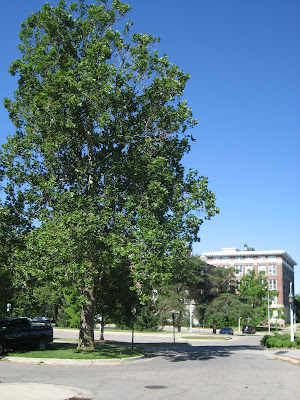
Something a little more tangible to remember this first Spartan football championship in 20 years.


 Image via Wikipediae that this year the Spartans got it done.
Image via Wikipediae that this year the Spartans got it done.





 Image via WikipediaA frosty look to the grass on this first morning of November.
Image via WikipediaA frosty look to the grass on this first morning of November.






 Image via Wikipediaraters found on earth. The impact was catalclysmic: fires raged over the surface, giant tsunamis radiated across the oceans, and the planet was rocked by massive earthquakes. Many scientists believe that the devastating global effects of the Chixulub impact caused the extinction of the dinosaurs. They believe that debris from the impact was suspended in the atmosphere. This would have blocked out the Sun's rays, turning the world ice cold, and spelling doom for the dinosaurs.
Image via Wikipediaraters found on earth. The impact was catalclysmic: fires raged over the surface, giant tsunamis radiated across the oceans, and the planet was rocked by massive earthquakes. Many scientists believe that the devastating global effects of the Chixulub impact caused the extinction of the dinosaurs. They believe that debris from the impact was suspended in the atmosphere. This would have blocked out the Sun's rays, turning the world ice cold, and spelling doom for the dinosaurs.


 My first thought was we should save this building as it is a major part of Michigan State's history. But, some investigation finds that the place is deteriorating with the floors and ceilings tilted and the place infested with cockroaches and bats, so maybe the history, English, and religious studies departments will be better off in their new home in Wells Hall.
My first thought was we should save this building as it is a major part of Michigan State's history. But, some investigation finds that the place is deteriorating with the floors and ceilings tilted and the place infested with cockroaches and bats, so maybe the history, English, and religious studies departments will be better off in their new home in Wells Hall. Image via Wikipedia
Image via Wikipedia My main memory of Morrill Hall is from spring term of freshman year, when for some reason now forgotten I decided to drop an economic course a couple of weeks into the term. The course was taught by one of the most popular professors on campus, but one who had a reputation for being foul tempered and mean. I announced at dinner that I was headed to Morrill Hall for a face to face with the professor. The reaction I received was pretty much, 'You are really going to get blasted." This girl I had been dating (Leslie) came with me for support, or maybe out of curiosity. I remember the long slow walk up the four flights of stairs, and knocking on the door. I survived. He basically told me I would be stupider for not taking his class, and would live to regret it, but he signed the paper, and I shot out of there
My main memory of Morrill Hall is from spring term of freshman year, when for some reason now forgotten I decided to drop an economic course a couple of weeks into the term. The course was taught by one of the most popular professors on campus, but one who had a reputation for being foul tempered and mean. I announced at dinner that I was headed to Morrill Hall for a face to face with the professor. The reaction I received was pretty much, 'You are really going to get blasted." This girl I had been dating (Leslie) came with me for support, or maybe out of curiosity. I remember the long slow walk up the four flights of stairs, and knocking on the door. I survived. He basically told me I would be stupider for not taking his class, and would live to regret it, but he signed the paper, and I shot out of there .Some early Women's Building Residents.
.Some early Women's Building Residents. The Library.
The Library. The gymnasium.
The gymnasium.







 It has been found in Michigan, in the South Haven area, but the cold winter temperatures keep it from being the problem that it is in the South. According to ScienceDaily, kudzu has been spreading in the southern U.S. at the rate of 150,000 acres annually with devastating environmental consequences.
It has been found in Michigan, in the South Haven area, but the cold winter temperatures keep it from being the problem that it is in the South. According to ScienceDaily, kudzu has been spreading in the southern U.S. at the rate of 150,000 acres annually with devastating environmental consequences.






 This one stands guard over the McLane Baseball Stadium.
This one stands guard over the McLane Baseball Stadium. They are easy to find in the Kellogg Center area.
They are easy to find in the Kellogg Center area.
 Another favorite near the Union by the Human Ecology building.
Another favorite near the Union by the Human Ecology building.
 This row we found in Spartan Village, where we used to live in married housing. The trees are a lot bigger now, and our apartment has been torn down.
This row we found in Spartan Village, where we used to live in married housing. The trees are a lot bigger now, and our apartment has been torn down.
